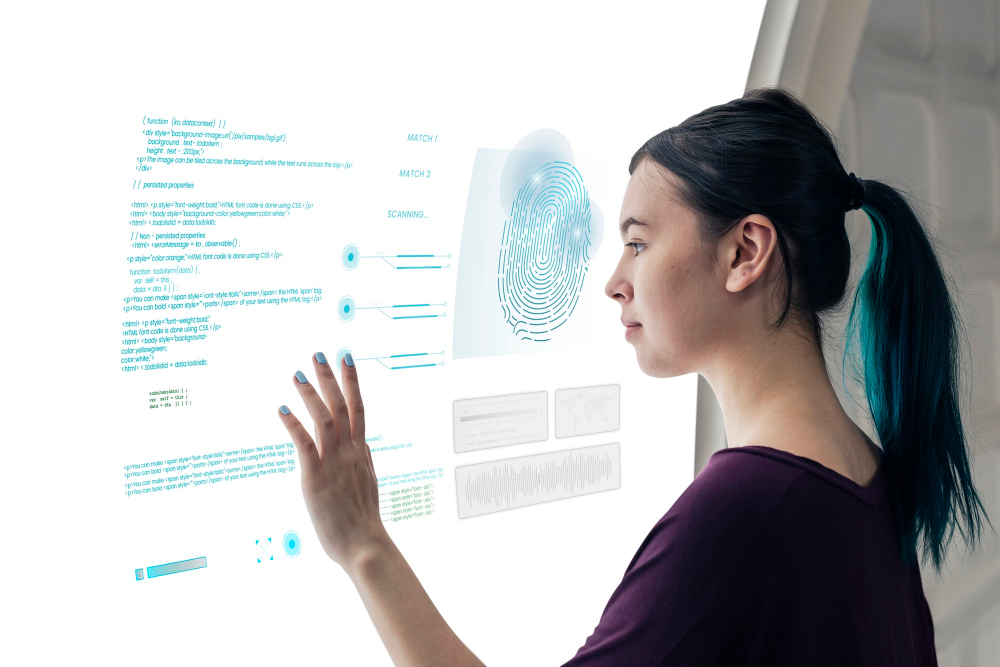Why use biometric authentication in 2023?

Biometric authentication offers improved convenience and security for users. The practice utilizes unique characteristics like facial recognition, fingerprints, voice authentication, typing biometrics (known as keystroke dynamics) etc., for user verification. Due to added convenience of biometric authentication, consumers are more willing to use this technology.
According to a survey, about 86% of its respondents are interested in using biometric authentication. In addition, about 70% of these respondents are more convenient and easier. (Source)
Importance of biometric authentication in 2023
Well, biometric authentication has become one of the leading trends in 2023. It has become nonnegotiable due to multiple reasons. Let's learn about these reasons below.
So, here we go:
- 1. Faster and more convenient user-experience
Biometric authentication significantly improves the user experience by removing the need to remember complex PIN codes or passwords. It is particularly advantageous for individuals who struggle with password management. In addition, it is also beneficial for those who regularly access multiple accounts across various platforms.
With biometrics, you only need a quick scan or glance to gain access. This simplicity reduces frustration and encourages users to adopt stronger security practices.
Besides that, the speed of biometric authentication is unparalleled. A simple touch or look can grant access within seconds. On the other hand, typing in a password or PIN can take considerably longer to grant access. This speed is especially beneficial when quick access is imperative, such as during emergencies or when using mobile devices on the go.
Typing biometrics, face id, fingerprint, voice recognition can all be used as a standalone passwordless solution, or as a two factor authentication or multi factor authentication method. The keystroke dynamics authentication is a newer technology, but is faster than using the traditional username plus password.
- 2. Stronger security
With the evolving technology, the data security risk is also increasing tremendously.
The uniqueness of biometric traits is the core of its security advantage. For instance, fingerprints have distinct patterns that are nearly impossible to replicate accurately. It makes it extremely difficult for hackers to breach systems using stolen or fabricated biometric data.
- * Biometric authentication adds an extra layer of protection, as even if a password were compromised, unauthorized access would still be impossible without the corresponding biometric information.
- * Furthermore, biometric traits are difficult to alter, ensuring long-term security. At the same time, passwords may need to be changed regularly to prevent breaches. However, biometric traits remain constant and immutable, making them resistant to common hacking techniques.
Ultimately these ensure enhanced security for consumers.
- 3. Touchless access will be standard
The global COVID-19 pandemic accelerated the demand for touchless technologies, and biometric authentication fits perfectly into this paradigm. Touchless access has gained traction across various industries. These industries range from healthcare to finance, and biometric authentication will likely become the new standard.
Facial recognition and iris scanning, in particular, allow users to authenticate themselves without touching any surface. These biometric authentication techniques help minimize the risk of germ transmission and enhance public health safety.
- 4. Identity theft prevention
Biometric authentication is a strong weapon against identity theft due to its intrinsic nature of relying on unique physical attributes.
Traditional methods of stealing passwords or credit card information become obsolete when used with biometric barriers. Hackers would need physical access to a person's biometric data, significantly harder than digital passwords stored on servers.
Even more, biometric data is usually stored locally on the device. The practice helps reduce the risk of central breaches exposing large amounts of sensitive data. Even if a breach were to occur, the biometric data stored would be useless without the presence of that individual. As a result, it will help in reducing identity theft cases significantly.
- 5. Non-transferable
We all know that passwords and PIN codes are shareable. Hackers can easily transfer or steal these passwords to access personal or sensitive information. However, biometric traits are characteristically linked to an individual.
- This authentication method ensures that only the right owner of the biometric data can access the protected system or device.
- For instance, even if someone has accessed your device or password of your account, still, they couldn't use the device or account due to requiring biometric authentication. Fortunately, this authentication process couldn’t be completed without the person present.
This non-transferable biometric authentication feature adds an extra layer of security to scenarios where you need to control access to your personal information more tightly. It will help prevent unauthorized individuals from gaining entry even if they have physical possession of a device or access point.
Final Thoughts
We live in the digital world, where we risk losing our personal information to the wrong hands. That’s why it has become imperative to practice robust authentication processes. Biometric authentication is arguably a cutting-edge technology leveraging individuals' unique behavioral and physical characteristics to provide added security and convenience to users. The authentication solution offers various benefits that reshape how we secure our digital lives.
Image source: Freepik / RawPixel
